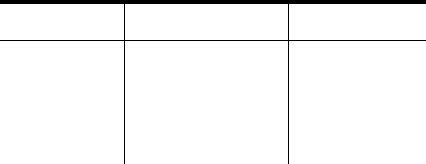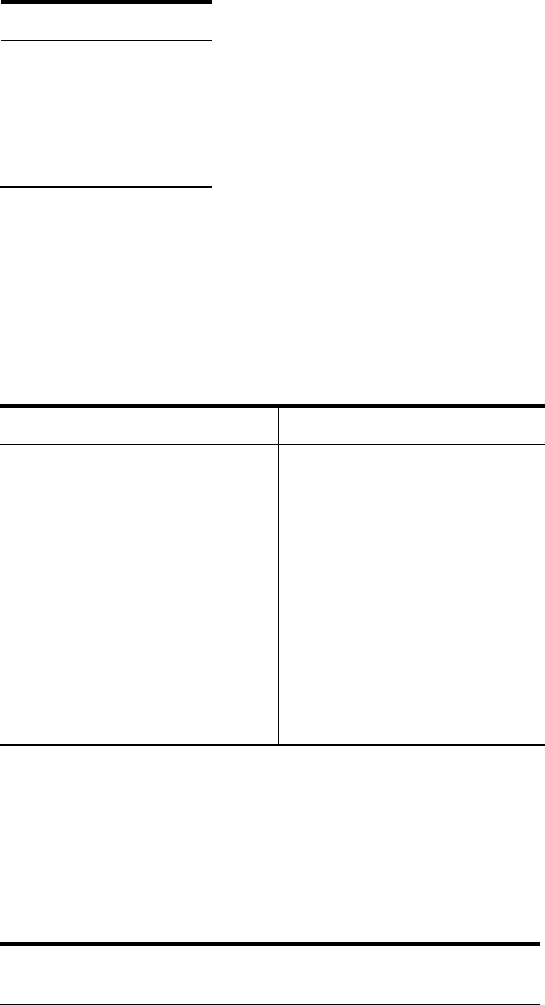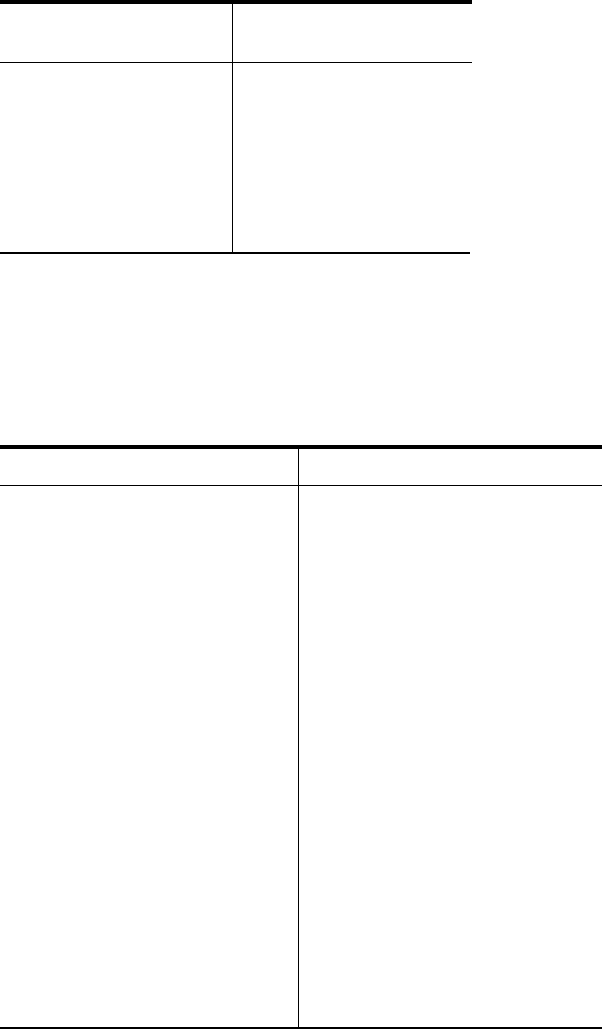Daniel W.W. Biostatistics: A Foundation for Analysis in the Health Sciences
Подождите немного. Документ загружается.


between QTc interval, heart rate, heart rate change, and therapeutic blood pressure response for
73 hypertensive subjects taking -blockers. The researchers found that QTc interval length, pre-
treatment heart rate, and heart rate change with therapy were not good predictors of blood pres-
sure response to 1-selective -blockers in hypertensive subjects.
27. Skinner et al. (A-16) conducted a cross-sectional telephone survey to obtain 24-hour dietary
recall of infants’ and toddlers’ food intakes, as reported by mothers or other primary caregivers.
One finding of interest was that among 561 toddlers ages 15–24 months, the age in weeks of
the child was negatively related to vitamin C density When predicting
calcium density, age in weeks of the child produced a slope coefficient of 1.47 with a p
of .09.
28. Park et al. (A-17) studied 29 male subjects with clinically confirmed cirrhosis. Among other vari-
ables, they measured whole blood manganese levels (MnB), plasma manganese (MnP), urinary
manganese (MnU), and pallidal index (PI), a measure of signal intensity in T1 weighted magnetic
resonance imaging (MRI). They found a correlation coefficient of .559, between MnB
and PI. However, there were no significant correlations between MnP and Pi or MnU and
respectively).
For the studies described in Exercises 29 through 46, do the following:
(a) Perform a statistical analysis of the data (including hypothesis testing and confidence interval
construction) that you think would yield useful information for the researchers.
(b) Construct graphs that you think would be helpful in illustrating the relationships among
variables.
(c) Where you think appropriate, use techniques learned in other chapters, such as analysis of vari-
ance and hypothesis testing and interval estimation regarding means and proportions.
(d) Determine p values for each computed test statistic.
(e) State all assumptions that are necessary to validate your analysis.
(f) Describe the population(s) about which you think inferences based on your analysis would be
applicable.
(g) If available, consult the cited reference and compare your analyses and results with those of
the authors.
29. Moerloose et al. (A-18) conducted a study to evaluate the clinical usefulness of a new laboratory
technique (method A) for use in the diagnosis of pulmonary embolism (PE). The performance of
the new technique was compared with that of a standard technique (method B). Subjects consisted
of patients with clinically suspected PE who were admitted to the emergency ward of a European
university hospital. The following are the measurements obtained by the two techniques for 85
patients. The researchers performed two analyses: (1) on all 85 pairs of measurements and (2) on
those pairs of measurements for which the value for method B was less than 1000.
BA BA BA
9 119 703 599 2526 1830
84 115 725 610 2600 1880
86 108 727 3900 2770 2100
190 182 745 4050 3100 1780
208 294 752 785 3270 1870
Pi1r = .353, p 7 .05, r = .252, p 7 .05,
p 6 .01,
b
1
N
=-.43, p = .012.
bb
b
REVIEW QUESTIONS AND EXERCISES 467
(Continued)

BA BA BA
218 226 884 914 3280 2480
251 311 920 1520 3410 1440
252 250 966 972 3530 2190
256 312 985 913 3900 2340
264 403 994 556 4260 3490
282 296 1050 1330 4300 4960
294 296 1110 1410 4560 7180
296 303 1170 484 4610 1390
311 336 1190 867 4810 1600
344 333 1250 1350 5070 3770
371 257 1280 1560 5470 2780
407 424 1330 1290 5576 2730
418 265 1340 1540 6230 1260
422 347 1400 1710 6260 2870
459 412 1530 1333 6370 2210
468 389 1560 1250 6430 2210
481 414 1840 764 6500 2380
529 667 1870 1680 7120 5220
540 486 2070 1310 7430 2650
562 720 2120 1360 7800 4910
574 343 2170 1770 8890 4080
646 518 2270 2240 9930 3840
664 801 2490 1910
670 760 2520 2110
Source: Dr. Philippe de Moerloose. Used with permission.
30. Research by Huhtaniemi et al. (A-19) focused on the quality of serum luteinizing hormone (LH)
during pubertal maturation in boys. Subjects, consisting of healthy boys entering puberty (ages 11
years 5 months to 12 years), were studied over a period of 18 months. The following are the con-
centrations (IU/L) of bioactive LH (B-LH) and immunoreactive LH (I-LH) in serum samples taken
from the subjects. Only observations in which the subjects’ B/I ratio was greater than 3.5 are
reported here.
I-LH B-LH I-LH B-LH
.104 .37 .97 3.63
.041 .28 .49 2.26
.124 .64 1 4.55
.808 2.32 1.17 5.06
.403 1.28 1.46 4.81
.27 .9 1.97 8.18
.49 2.45 .88 2.48
.66 2.8 1.24 4.8
.82 2.6 1.54 3.12
468 CHAPTER 9 SIMPLE LINEAR REGRESSION AND CORRELATION
(Continued)

I-LH B-LH I-LH B-LH
1.09 4.5 1.71 8.4
1.05 3.2 1.11 6
.83 3.65 1.35 7.2
.89 5.25 1.59 7.6
.75 2.9
Source: Dr. Ilpo T. Huhtaniemi. Used with permission.
31. Tsau et al. (A-20) studied urinary epidermal growth factor (EGF) excretion in normal children and
those with acute renal failure (ARF). Random urine samples followed by 24-hour urine collection
were obtained from 25 children. Subjects ranged in age from 1 month to 15 years. Urinary EGF
excretion was expressed as a ratio of urinary EGF to urinary creatinine concentration (EGF/Cr).
The authors conclude from their research results that it is reasonable to use random urine tests for
monitoring EGF excretion. Following are the random (spot) and 24-hour urinary EGF/Cr concen-
trations (pmol/mmol) for the 25 subjects:
24-h Urine Spot Urine 24-h Urine Spot Urine
Subject EGF/Cr (x) EGF/Cr (y) Subject EGF/Cr (x) EGF/Cr (y)
1 772 720 14 254 333
2 223 271 15
a
93 84
3 494 314 16 303 512
4 432 350 17 408 277
5
a
79 79 18 711 443
6
a
155 118 19 209 309
7 305 387 20 131 280
8 318 432 21 165 189
9
a
174 97 22 151 101
10 1318 1309 23 165 221
11 482 406 24 125 228
12 436 426 25 232 157
13 527 595
a
Subjects with ARF.
Source: Dr. Yong-Kwei Tsau. Used with permission.
32. One of the reasons for a study by Usaj and Starc (A-21) was an interest in the behavior of pH
kinetics during conditions of long-term endurance and short-term endurance among healthy run-
ners. The nine subjects participating in the study were marathon runners aged years. The
authors report that they obtained a good correlation between pH kinetics and both short-term and
long-term endurance. The following are the short- ( ) and long-term ( ) speeds and blood pH
measurements for the participating subjects.
V
LE
V
SE
pH Range
5.4 5.6 .083
4.75 5.1 .1
4.6 4.6 .021
V
LE
V
SE
26 ; 5
REVIEW QUESTIONS AND EXERCISES 469
(Continued)

V
LE
V
SE
pH Range
4.6 5 .065
4.55 4.9 .056
4.4 4.6 .01
4.4 4.9 .058
4.2 4.4 .013
4.2 4.5 .03
33. Bean et al. (A-22) conducted a study to assess the performance of the isoelectric focusing/
immunoblotting/laser densitometry (IEF/IB/LD) procedure to evaluate carbohydrate-deficient
transferrin (CDT) derived from dry blood spots. The investigators evaluated paired serum (S)
and dry blood spot (DBS) specimens simultaneously for CDT. Assessment of CDT serves as a
marker for alcohol abuse. The use of dry blood spots as a source of CDT for analysis by
IEF/IB/LD results in simplified sampling, storage, and transportation of specimens. The follow-
ing are the IEF/IB/LD values in densitometry units (DU) of CDT from 25 serum and dry blood
spot specimens:
Specimen No. S DBS Specimen No. S DBS
1642314913
2743815108
3753716177
4 103 53 17 38 14
5 109 18 99
6221819159
7 3320 20 7031
8 10 5 21 61 26
9 3114 22 4214
10 30 15 23 20 10
11 28 12 24 58 26
12 16 9 25 31 12
13 13 7
34. Kato et al. (A-23) measured the plasma concentration of adrenomedullin (AM) in patients with
chronic congestive heart failure due to various cardiac diseases. AM is a hypotensive peptide,
which, on the basis of other studies, the authors say, has an implied role as a circulating hor-
mone in regulation of the cardiovascular system. Other data collected from the subjects included
plasma concentrations of hormones known to affect the cardiovascular system. Following are
the plasma AM (fmol/ml) and plasma renin activity (PRA) ( ) values for 19 heart fail-
ure patients:
Patient Sex Age AM PRA
No. ( ) (Years) (fmol/ml) (ng/ )
1 1 70 12.11 .480594
2 1 44 7.306 .63894
3 1 72 6.906 1.219542
L
Á
s1 M, 2 F
ng/L
Á
s
470 CHAPTER 9 SIMPLE LINEAR REGRESSION AND CORRELATION
Source: Anton Usaj, Ph.D.
Used with permission.
Source: Dr. Pamela Bean.
Used with permission.
(Continued)

Patient Sex Age AM PRA
No. ( ) (Years) (fmol/ml) (ng/ )
4 1 62 7.056 .450036
5 2 52 9.026 .19446
6 2 65 10.864 1.966824
7 2 64 7.324 .29169
8 1 71 9.316 1.775142
9 2 61 17.144 9.33408
10 1 68 6.954 .31947
11 1 63 7.488 1.594572
12 2 59 10.366 .963966
13 2 55 10.334 2.191842
14 2 57 13 3.97254
15 2 68 6.66 .52782
16 2 51 8.906 .350028
17 1 69 8.952 1.73625
18 1 71 8.034 .102786
19 1 46 13.41 1.13898
Source: Dr. Johji Kato. Used with permission.
35. In a study reported on in Archives of Disease in Childhood, Golden et al. (A-24) tested the
hypothesis that plasma calprotectin (PCal) (a neutrophil cytosolic protein released during neu-
trophil activation or death) concentration is an early and sensitive indicator of inflammation
associated with bacterial infection in cystic fibrosis (CF). Subjects were children with con-
firmed CF and a control group of age- and sex-matched children without the disease. Among
the data collected were the following plasma calprotectin ( ) and plasma copper (PCu)
( mol/L) measurements. Plasma copper is an index of acute phase response in cystic fibrosis.
The authors reported a correlation coefficient of .48 between plasma calprotectin ( ) and
plasma copper.
CF CF CF
Subject Subject Subject
No. PCal PCu No. PCal PCu No. PCal PCu
1 452 17.46 12 1548 15.31 22 674 18.11
2 590 14.84 13 708 17.00 23 3529 17.42
3 1958 27.42 14 8050 20.00 24 1467 17.42
4 2015 18.51 15 9942 25.00 25 1116 16.73
5 417 15.89 16 791 13.10 26 611 18.11
6 2884 17.99 17 6227 23.00 27 1083 21.56
7 1862 21.66 18 1473 16.70 28 1432 21.56
8 10471 19.03 19 8697 18.11 29 4422 22.60
9 25850 16.41 20 621 18.80 30 3198 18.91
10 5011 18.51 21 1832 17.08 31 544 14.37
11 5128 22.70
log
10
m
mg>L
L
Á
s1 M, 2 F
REVIEW QUESTIONS AND EXERCISES 471
(Continued)

Control Control
Subject Subject
No. PCal PCu No. PCal PCu
1 674 16.73 17 368 16.73
2 368 16.73 18 674 16.73
3 321 16.39 19 815 19.82
4 1592 14.32 20 598 16.1
5 518 16.39 21 684 13.63
6 815 19.82 22 684 13.63
7 684 17.96 23 674 16.73
8 870 19.82 24 368 16.73
9 781 18.11 25 1148 24.15
10 727 18.11 26 1077 22.30
11 727 18.11 27 518 9.49
12 781 18.11 28 1657 16.10
13 674 16.73 29 815 19.82
14 1173 20.53 30 368 16.73
15 815 19.82 31 1077 22.30
16 727 18.11
Source: Dr. Barbara E. Golden. Used with permission.
36. Gelb et al. (A-25) conducted a study in which they explored the relationship between moderate to
severe expiratory airflow limitation and the presence and extent of morphologic and CT scored
emphysema in consecutively seen outpatients with chronic obstructive pulmonary disease. Among
the data collected were the following measures of lung CT and pathology (PATH) for emphysema
scoring:
CT Score PATH CT Score PATH
5154550
90 70 45 40
50 20 85 75
10 25 7 0
12 25 80 85
35 10 15 5
40 35 45 40
45 30 37 35
5 5 75 45
25 50 5 5
60 60 5 20
70 60
Source: Dr. Arthur F. Gelb. Used with permission.
37. The objective of a study by Witteman et al. (A-26) was to investigate skin reactivity with purified
major allergens and to assess the relation with serum levels of immunoglobulin E (IgE) antibodies and
to determine which additional factors contribute to the skin test result. Subjects consisted of patients
with allergic rhinitis, allergic asthma, or both, who were seen in a European medical center. As part
of their study, the researchers collected, from 23 subjects, the following measurements on specific IgE
472 CHAPTER 9 SIMPLE LINEAR REGRESSION AND CORRELATION

(IU/ml) and skin test (ng/ml) in the presence of Lol p 5, a purified allergen from grass pollen. We
wish to know the nature and strength of the relationship between the two variables. (Note: The authors
converted the measurements to natural logarithms before investigating this relationship.)
IgE Skin Test
24.87 .055
12.90 .041034
9.87 .050909
8.74 .046
6.88 .039032
5.90 .050909
4.85 .042142
3.53 .055
2.25 4.333333
2.14 .55
1.94 .050909
1.29 .446153
.94 .4
.91 .475
.55 4.461538
.30 4.103448
.14 7.428571
.11 4.461538
.10 6.625
.10 49.13043
.10 36.47058
.10 52.85714
.10 47.5
Source: Dr. Jaring S. van der Zee.
Used with permission.
38. Garland et al. (A-27) conducted a series of experiments to delineate the complex maternal-fetal
pharmacokinetics and the effects of zidovudine (AZT) in the chronically instrumented maternal
and fetal baboon (Papio species) during both steady-state intravenous infusion and oral bolus
dosage regimens. Among the data collected were the following measurements on dosage
(mg/kg/h) and steady-state maternal plasma AZT concentration (ng/ml):
AZT AZT
Dosage Concentration Dosage Concentration
2.5 832 2.0 771
2.5 672 1.8 757
2.5 904 0.9 213
2.5 554 0.6 394
2.5 996 0.9 391
1.9 878 1.3 430
2.1 815 1.1 440
1.9 805 1.4 352
REVIEW QUESTIONS AND EXERCISES 473
(Continued)(Continued)

AZT AZT
Dosage Concentration Dosage Concentration
1.9 592 1.1 337
0.9 391 0.8 181
1.5 710 0.7 174
1.4 591 1.0 470
1.4 660 1.1 426
1.5 694 0.8 170
1.8 668 1.0 360
1.8 601 0.9 320
Source: Dr. Marianne Garland. Used with permission.
39. The purpose of a study by Halligan et al. (A-28) was to evaluate diurnal variation in blood pres-
sure (BP) in women who were normotensive and those with pre-eclampsia. The subjects were
similar in age, weight, and mean duration of gestation (35 weeks). The researchers collected the
following BP readings. As part of their analysis they studied the relationship between mean day
and night measurements and day/night differences for both diastolic and systolic BP in each group.
C1 C2 C3 C4 C5 C1 C2 C3 C4 C5
0 75 56 127 101 1 94 78 137 119
0 68 57 113 104 1 90 86 139 138
0 72 58 115 105 1 85 69 138 117
0 71 51 111 94 1 80 75 133 126
0 81 61 130 110 1 81 60 127 112
0 68 56 111 101 1 89 79 137 126
0 78 60 113 102 1 107 110 161 161
0 71 55 120 99 1 98 88 152 141
0 65 51 106 96 1 78 74 134 132
0 78 61 120 109 1 80 80 121 121
0 74 60 121 104 1 96 83 143 129
0 75 52 121 102 1 85 76 137 131
0 68 50 109 91 1 79 74 135 120
0 63 49 108 99 1 91 95 139 135
0 77 47 132 115 1 87 67 137 115
0 73 51 112 90 1 83 64 143 119
0 73 52 118 97 1 94 85 127 123
0 64 62 122 114 1 85 70 142 124
0 64 54 108 94 1 78 61 119 110
0 66 54 106 88 1 80 59 129 114
0 72 49 116 101 1 98 102 156 163
0 83 60 127 103 1 100 100 149 149
0 69 50 121 104 1 89 84 141 135
0 72 52 108 95 1 98 91 148 139
; diastolic; dias-
tolic; systolic; systolic.
Source: Dr. Aidan Halligan. Used with permission.
C5 = nightC4 = day
C3 = nightC2 = day1 = pre-eclamptic2C1 = group 10 = normotensive,
474 CHAPTER 9 SIMPLE LINEAR REGRESSION AND CORRELATION

40. Marks et al. (A-29) conducted a study to determine the effects of rapid weight loss on contraction
of the gallbladder and to evaluate the effects of ursodiol and ibuprofen on saturation, nucleation
and growth, and contraction. Subjects were obese patients randomly assigned to receive ursodiol,
ibuprofen, or placebo. Among the data collected were the following cholesterol saturation index
values (CSI) and nucleation times (NT) in days of 13 (six male, seven female) placebo-treated
subjects at the end of 6 weeks:
CSI NT
1.20 4.00
1.42 6.00
1.18 14.00
.88 21.00
1.05 21.00
1.00 18.00
1.39 6.00
1.31 10.00
1.17 9.00
1.36 14.00
1.06 21.00
1.30 8.00
1.71 2.00
Source: Dr. Jay W. Marks.
Used with permission.
41. The objective of a study by Peacock et al. (A-30) was to investigate whether spinal osteoarthritis
is responsible for the fact that lumbar spine bone mineral density (BMD) is greater when meas-
ured in the anteroposterior plane than when measured in the lateral plane. Lateral spine radiographs
were studied from women (age range 34 to 87 years) who attended a hospital outpatient depart-
ment for bone density measurement and underwent lumbar spine radiography. Among the data col-
lected were the following measurements on anteroposterior (A) and lateral (L) BMD (g/cm ):
ABMD LBMD ABMD LBMD ABMD LBMD
.879 .577 1.098 .534 1.091 .836
.824 .622 .882 .570 .746 .433
.974 .643 .816 .558 1.127 .732
.909 .664 1.017 .675 1.411 .766
.872 .559 .669 .590 .751 .397
.930 .663 .857 .666 .786 .515
.912 .710 .571 .474 1.031 .574
.758 .592 1.134 .711 .622 .506
1.072 .702 .705 .492 .848 .657
.847 .655 .775 .348 .778 .537
1.000 .518 .968 .579 .784 .419
.565 .354 .963 .665 .659 .429
1.036 .839 .933 .626 .948 .485
.811 .572 .704 .194 .634 .544
.901 .612 .624 .429 .946 .550
2
REVIEW QUESTIONS AND EXERCISES 475
(Continued)

ABMD LBMD ABMD LBMD ABMD LBMD
1.052 .663 1.119 .707 1.107 .458
.731 .376 .686 .508 1.583 .975
.637 .488 .741 .484 1.026 .550
.951 .747 1.028 .787
.822 .610 .649 .469
.951 .710 1.166 .796
1.026 .694 .954 .548
1.022 .580 .666 .545
1.047 .706
.737 .526
Source: Dr. Cyrus Cooper. Used with permission.
42. Sloan et al. (A-31) note that cardiac sympathetic activation and parasympathetic withdrawal result
in heart rate increases during psychological stress. As indicators of cardiac adrenergic activity,
plasma epinephrine (E) and norepinephrine (NE) generally increase in response to psychological
challenge. Power spectral analysis of heart period variability also provides estimates of cardiac
autonomic nervous system activity. The authors conducted a study to determine the relationship
between neurohumoral and two different spectral estimates of cardiac sympathetic nervous system
activity during a quiet resting baseline and in response to a psychologically challenging arithmetic
task. Subjects were healthy, medication-free male and female volunteers with a mean age of 37.8
years. None had a history of cardiac, respiratory, or vascular disease. Among the data collected
were the following measurements on E, NE, low-frequency (LF) and very-low-frequency (VLF)
power spectral indices, and low-frequency/high frequency ratios (LH/HF). Measurements are given
for three periods: baseline (B), a mental arithmetic task (MA), and change from baseline to task
(DELTA).
Patient No. E NE LF/HF LF Period VLF
5 3.55535 6.28040 0.66706 7.71886 B 7.74600
5 0.05557 0.13960 0.48115 0.99826 DELTA 2.23823
5 3.61092 6.41999 0.18591 6.72059 MA 5.50777
6 3.55535 6.24611 2.48308 7.33729 B 6.64353
6 0.10821 0.05374 2.03738 0.77109 DELTA 1.27196
6 3.66356 6.19236 0.44569 6.56620 MA 5.37157
7 3.29584 4.91998 0.15473 7.86663 B 7.99450
7 0.59598 0.53106 0.14086 0.81345 DELTA 2.86401
7 3.89182 5.45104 0.01387 7.05319 MA 5.13049
8 4.00733 5.97635 1.58951 8.18005 B 5.97126
8 0.29673 0.11947 0.11771 1.16584 DELTA 0.39078
8 4.30407 6.09582 1.47180 7.01421 MA 5.58048
12 3.87120 5.35659 0.47942 6.56488 B 5.94960
12 * * 0.19379 0.03415 DELTA 0.50134
12 * * 0.67321 6.59903 MA 6.45094
13 3.97029 5.85507 0.13687 6.27444 B 5.58500
13 0.20909 0.10851 1.05965 0.49619 DELTA 1.68911
13 3.76120 5.96358 1.19652 5.77825 MA 3.89589
476 CHAPTER 9 SIMPLE LINEAR REGRESSION AND CORRELATION
(Continued)
